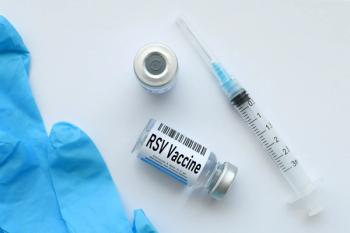
Alzheimer Disease Prevalence Reaches Record High, Surpassing 7.2 Million Cases
Key Takeaways
- Alzheimer's disease rates are projected to exceed 7.2 million, with significant growth expected by 2050.
- AD is marked by progressive neuronal damage, impairing memory, language, and cognitive functions.
A survey showed that 92% of Americans are open to treatments that would slow disease progression.
Alzheimer disease (AD) rates are set to exceed 7.2 million for the first time, representing the highest incidence of AD to date in individuals ages 65 and older. By 2050, that population is projected to grow to 82 million Americans. These findings were reported by the Alzheimer’s Association in their 2025 Alzheimer's Disease Facts and Figures Report.1
AD is a progressive disease in which neurons in the brain are damaged, resulting in impaired functioning of memory, language, and thinking, as well as mood regulation. It is characterized by the excessive accumulation of the protein fragment beta-amyloid and of an abnormal form of the protein tau. The symptoms of AD can take time to develop, which typically happens over a course of about 20 years. During this time, the brain uses alternate pathways to compensate but over time will lose these compensatory capabilities, impairing a patient’s ability to engage in everyday tasks. By this point a patient is considered to have dementia.2
Of the 7.2 million cases, 1.9 million are individuals between the ages of 65 and 74 years (26.3%), 2.8 million are between the ages of 75 and 84 years (39.0%), and 2.5 million are over the age of 85 (34.8%). Although AD primarily affects older adults, an estimated 200,000 Americans under age 65 have young-onset dementia, with limited but concerning prevalence data suggesting about 110 cases per 100,000 people ages 30 to 64.2
The association’s report is paired with a survey that draws from a representative panel of adults 45 and older. About 83% of respondents said they were worried to some degree about developing AD, and 4 out of 5 said they’d want a diagnosis even before symptoms disrupted their daily lives and that they’d be willing to take a blood test to detect early biomarkers of AD if one were available. Additionally, 92% said they would take a treatment that could slow the disease.2
"If diagnosed, most people are open to new treatments that can slow the progression of the disease," Elizabeth Edgerly, PhD, of the Alzheimer's Association, told MedPage Today. "These findings represent a significant shift in people's mindsets—even from what we saw just a few years ago—when many people were hesitant to know if they had the disease because little could be done to help them."1
However, progress will take time. Although public interest in early detection is high, researchers caution that there is still insufficient evidence to support routine diagnostic testing in individuals without symptoms. Without proven interventions for asymptomatic patients, such testing is not currently recommended. To help guide clinical decision-making, the Alzheimer’s Association is preparing updated guidelines on blood-based biomarkers and cognitive assessment tools, expected later in 2025.2
Another obstacle to progress is that federal funding cuts to health agencies like the FDA and NIH may limit new pathology discoveries that help drive the development of novel diagnostic tests or treatments. Health experts have voiced concerns that funding cuts could undermine vital research aimed at combating the disease and slowing its rising prevalence.1
Despite these limitations, the findings underscore a shift in how people view the disease and their role in managing it.
"The findings from our survey suggest most people want to be proactive in addressing their memory concerns, even if it might be [AD]," said Edgerly. "That's good news because early diagnosis offers the best opportunity for care, management, and treatment of the disease.”1
REFERENCES
1. Alzheimer's prevalence tops 7 million for the first time. MedPage Today. April 29, 2025. Accessed May 2, 2025. https://www.medpagetoday.com/neurology/alzheimersdisease/115347?xid=nl_mpt_morningbreak2025-04-30&mh=6d2b5f4f91352444bdf817a9c17750bc&zdee=gAAAAABm4uL9FCoIf1N83nrcwYYqnQUvN6Iw4dbaY-dGva4sOp57nSM2Ew3wD87ohRuoseQBDbCp1MG30J6ETpHXK1wNpp0NgnGTMFXrtFaNfWUoL5ekf-Y%3D&utm_source=Sailthru&utm_medium=email&utm_campaign=MorningBreak_043025&utm_term=NL_Gen_Int_Daily_News_Update_active
2. Alzheimer’s Association. 2025 Alzheimer’s Disease Facts and Figures. Alzheimers Dement. 2025.
Newsletter
Stay informed on drug updates, treatment guidelines, and pharmacy practice trends—subscribe to Pharmacy Times for weekly clinical insights.







































































































































































































